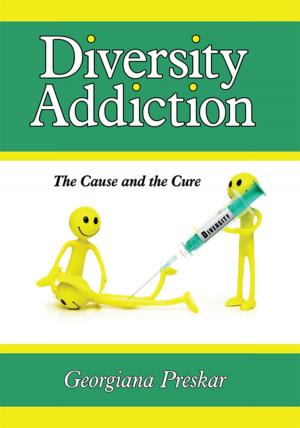Harry's Cosmeticology 9th Edition
eBook
Nonfiction, Health & Well Being, Medical, Specialties, Dermatology, Science & Nature, Technology, Engineering, Chemical & Biochemical, Health| Author: | ISBN: | 9780820601793 | |
| Publisher: | Chemical Publishing Company | Publication: | June 9, 2015 |
| Imprint: | Chemical Publishing Company | Language: | English |
| Author: | |
| ISBN: | 9780820601793 |
| Publisher: | Chemical Publishing Company |
| Publication: | June 9, 2015 |
| Imprint: | Chemical Publishing Company |
| Language: | English |
The most popular cosmetic technical book of all time, is updated by Meyer R. Rosen, FRSC, FAIC, together with over 150 international experts in the essential fundamentals, advanced and frontier areas of cosmetics and personal care science. - Part 1.1 Marketing Concepts - Part 1.2 Creating the Right Fragrance - Part 1.3 Fragrance Packaging Design - Part 1.4 Understanding the Value of Molecular Cell Biology and Gene Analysis for the Next Generation of Cosmetic Products - Part 2 Regulatory - Part 2.1 Regulatory Requirements, Intellectual Property and Achieving Global Market Success for Cosmetic Products - Part 2.4 Intellectual Property (IP) Issues: Patents and Trade Secrets - Part 3 The Substrates - Part 3.2.1 Classification Scale for Skin Complexions Around the World - Part 3.2.2 Dermatologic Disorders in Skin of Color - Part 3.2.3 Asian Ethnic Skin - Part 3.2.4 Compromised Skin in the Elderly - Part 3.3.0 The Hair - Part 3.3.1 An Overview of the Physical and Chemical Properties of Hair - Part 3.3.2 An Overview of Hair Follicle Anatomy and Biology - Part 3.3.3 Hair Aging: Fundamentals, Protection and Repair - Part 3.3.4 Mechanisms of Changes in Hair Shape - Part 3.3.5 Eyelashes - Part 3.4 The Nails - Part 3.5 The Nose - Part 3.6.1 The Mouth and Oral Care - Part 3.7 Lip Skin: Structure and Function - Part 3.8 Feminine Rejuvenation - Part 4 Ingredients - Part 4.2.1 Natural and Synthetic Polymers - Part 4.2.2 Rheology Modifiers - Part 4.2.3.1 Silicones in Personal Care Products - Part 4.2.3.2 Silicone Elastomer Applications - Part 4.2.4 Skin Whitener Ingredients - Part 4.2.5 Marine Ingredients for Skin Care - Part 4.2.6 Topical Reduction of Visible Skin Deterioration Due to Cellulite - Part 4.3.1 Topical Retinoids - Part 4.3.2 Peptides for Anti-Aging Skin Care - Part 4.3.3 MicroRNAs - Part 4.3.4 Amino Acids - Part 4.3.5 AHAs and Beyond - Part 4.3.6 Cytokines, Growth Factors, and Stem Cells - Part 4.3.7 Antioxidants in Cosmetics for Anti-Aging - Part 5 Anti-Aging - Part 5.0 Fundamentals of Skin Anti-Aging - Part 5.1 Theories of Aging - Part 5.2 The Cellular Water Principle - Part 5.3 Anti-Senescence - Part 5.4 Glycation, Proteasome Activation, and Telomere Maintenance - Part 5.5 Sirtuins and Skin - Part 5.6 Epigenetics of Skin Aging - Part 5.7 Chronobiology of the Skin: Skin Circadian Rhythm and Clock Genes - Part 5.8 Stress, Sleep and Epigenetic Orthodontics - Part 5.8.2 Epigenetic Orthodontics and Dento-Facial Orthopedics - Part 6 Formulating - 6.2 Skin Lightening, Whitening, and Brightening - 6.3 Sunscreens - 6.4 Antiperspirants / Deodorants - 6.5 Acne, Oily, and Aging Skin Product Formulation - 6.6 Face and Body - Masks / Scrubs - 6.7 Shaving Preparations - 6.8 Color Cosmetics - Hair Care - 6.10 Shampoos Ingredients, Formulation and Efficacy Evaluation - 6.11 Hair Styling - 6.15 Hair Colorants and Protection - 6.16 Reactive Hair Care Products - 6.17 Formula/Product Development - Part 6.18 Oral Care - Part 7. Sensory Characterization - Part 7.1 Sensory Signals - Part 8. Delivery Systems - Part 9 Nutracosmetics - Part 9.1 The Use of Nutraceutical Ingredients in the Cosmetic Industry - Part 9.2 Multi-Functional Botanicals for Nutricosmetics Applications - Part 10 NanoCosmetics - Part 11 Testing - Part 11.1 Methods to Assess Skin Barrier Integrity - Part 11.2 Imaging Techniques and Analysis for Quantification of Skin Appearance - Part 11.3 Biophysical Measurement and Evaluation of Skin Elasticity and Topography - Part 11.4 Test Methodology Used in Evaluating the Damage, Protection and Repair of Hair - Part 11.5 Clinical Testing of Cosmetics and Skin Care Products - Part 11.6 Nanomaterials Characterization - Part 11.7 In Vitro Assays to Measure Epigenetic Mechanisms Involved with Controlling Gene Expression - Part 12 Sustainability and Eco-Responsibility - Part 13 Cosmetic Manufacturing - Part 14 Packaging - Part 14.1 Emerging Strategies for Sustainable Packaging - Part 14.2 Aerosol Containment and Delivery
The most popular cosmetic technical book of all time, is updated by Meyer R. Rosen, FRSC, FAIC, together with over 150 international experts in the essential fundamentals, advanced and frontier areas of cosmetics and personal care science. - Part 1.1 Marketing Concepts - Part 1.2 Creating the Right Fragrance - Part 1.3 Fragrance Packaging Design - Part 1.4 Understanding the Value of Molecular Cell Biology and Gene Analysis for the Next Generation of Cosmetic Products - Part 2 Regulatory - Part 2.1 Regulatory Requirements, Intellectual Property and Achieving Global Market Success for Cosmetic Products - Part 2.4 Intellectual Property (IP) Issues: Patents and Trade Secrets - Part 3 The Substrates - Part 3.2.1 Classification Scale for Skin Complexions Around the World - Part 3.2.2 Dermatologic Disorders in Skin of Color - Part 3.2.3 Asian Ethnic Skin - Part 3.2.4 Compromised Skin in the Elderly - Part 3.3.0 The Hair - Part 3.3.1 An Overview of the Physical and Chemical Properties of Hair - Part 3.3.2 An Overview of Hair Follicle Anatomy and Biology - Part 3.3.3 Hair Aging: Fundamentals, Protection and Repair - Part 3.3.4 Mechanisms of Changes in Hair Shape - Part 3.3.5 Eyelashes - Part 3.4 The Nails - Part 3.5 The Nose - Part 3.6.1 The Mouth and Oral Care - Part 3.7 Lip Skin: Structure and Function - Part 3.8 Feminine Rejuvenation - Part 4 Ingredients - Part 4.2.1 Natural and Synthetic Polymers - Part 4.2.2 Rheology Modifiers - Part 4.2.3.1 Silicones in Personal Care Products - Part 4.2.3.2 Silicone Elastomer Applications - Part 4.2.4 Skin Whitener Ingredients - Part 4.2.5 Marine Ingredients for Skin Care - Part 4.2.6 Topical Reduction of Visible Skin Deterioration Due to Cellulite - Part 4.3.1 Topical Retinoids - Part 4.3.2 Peptides for Anti-Aging Skin Care - Part 4.3.3 MicroRNAs - Part 4.3.4 Amino Acids - Part 4.3.5 AHAs and Beyond - Part 4.3.6 Cytokines, Growth Factors, and Stem Cells - Part 4.3.7 Antioxidants in Cosmetics for Anti-Aging - Part 5 Anti-Aging - Part 5.0 Fundamentals of Skin Anti-Aging - Part 5.1 Theories of Aging - Part 5.2 The Cellular Water Principle - Part 5.3 Anti-Senescence - Part 5.4 Glycation, Proteasome Activation, and Telomere Maintenance - Part 5.5 Sirtuins and Skin - Part 5.6 Epigenetics of Skin Aging - Part 5.7 Chronobiology of the Skin: Skin Circadian Rhythm and Clock Genes - Part 5.8 Stress, Sleep and Epigenetic Orthodontics - Part 5.8.2 Epigenetic Orthodontics and Dento-Facial Orthopedics - Part 6 Formulating - 6.2 Skin Lightening, Whitening, and Brightening - 6.3 Sunscreens - 6.4 Antiperspirants / Deodorants - 6.5 Acne, Oily, and Aging Skin Product Formulation - 6.6 Face and Body - Masks / Scrubs - 6.7 Shaving Preparations - 6.8 Color Cosmetics - Hair Care - 6.10 Shampoos Ingredients, Formulation and Efficacy Evaluation - 6.11 Hair Styling - 6.15 Hair Colorants and Protection - 6.16 Reactive Hair Care Products - 6.17 Formula/Product Development - Part 6.18 Oral Care - Part 7. Sensory Characterization - Part 7.1 Sensory Signals - Part 8. Delivery Systems - Part 9 Nutracosmetics - Part 9.1 The Use of Nutraceutical Ingredients in the Cosmetic Industry - Part 9.2 Multi-Functional Botanicals for Nutricosmetics Applications - Part 10 NanoCosmetics - Part 11 Testing - Part 11.1 Methods to Assess Skin Barrier Integrity - Part 11.2 Imaging Techniques and Analysis for Quantification of Skin Appearance - Part 11.3 Biophysical Measurement and Evaluation of Skin Elasticity and Topography - Part 11.4 Test Methodology Used in Evaluating the Damage, Protection and Repair of Hair - Part 11.5 Clinical Testing of Cosmetics and Skin Care Products - Part 11.6 Nanomaterials Characterization - Part 11.7 In Vitro Assays to Measure Epigenetic Mechanisms Involved with Controlling Gene Expression - Part 12 Sustainability and Eco-Responsibility - Part 13 Cosmetic Manufacturing - Part 14 Packaging - Part 14.1 Emerging Strategies for Sustainable Packaging - Part 14.2 Aerosol Containment and Delivery















